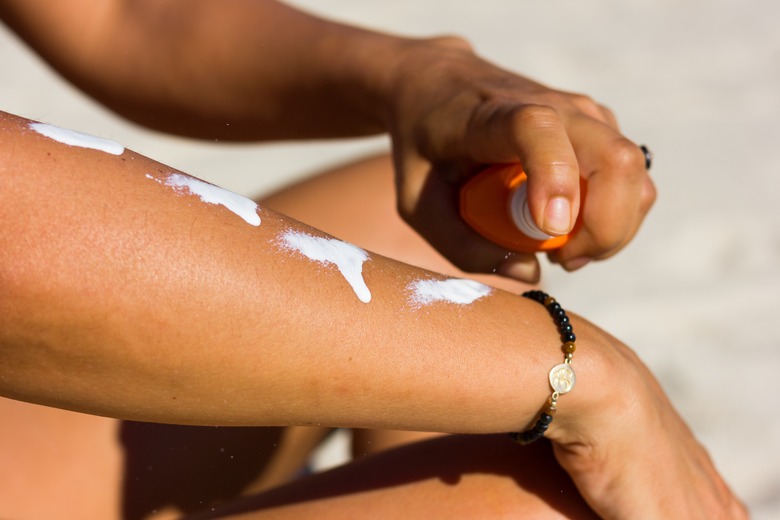How Does Sunscreen Really Work, Anyway?
We're well into beach season, BBQ season and just general "be outside" season. And, well, if you haven't been slathering on the SPF, you've probably already dealt with a nasty sunburn (or a few) this summer.
So clearly, you know the basics of what sunscreen works – it screens out the sun rays to prevent sunburn, duh! But what's the chemistry behind it, and the science of how it actually keeps you safe when you're outside? Read on to find out.
First, a Primer on Sunburns
First, a Primer on Sunburns
The sun's painful (and harmful) side effects happen because it emits ultraviolet (UV) light rays. Those rays have a short, small wavelength that allows them to penetrate the first few layers of your skin and get into your skin cells and cause damage.
Specifically, the sun's UV rays damage your DNA, causing inflammation and genetic mutations. The inflammation triggers redness and swelling – that all-too-familiar sunburn! And the genetic mutations can, over time, increase your risk for skin cancer.
Got It – So What About Sunscreen?
Got It – So What About Sunscreen?
So now you know the deets on what happens when you get a sunburn – so how does sunscreen actually help?
Well, it depends. There are two major types of sunscreens on the market: physical and chemical.
Physical sunscreens reflect the sun's UV rays back into the environment. Think of 'em like tiny chemical mirrors – the sun's rays bounce right off them, so they don't penetrate your skin and cause sun damage. You might see physical sunscreens labelled as "mineral sunscreens" at the drug store, and they'll have titanium dioxide or zinc oxide as their active ingredient.
Chemical sunscreens are a little different. They contain chemicals that absorb the UV light. Think of 'em like little chemical sponges that take up the UV rays before they penetrate your skin and cause damage. They contain active ingredients like avobenzone or oxybenzone.
What Does SPF Rating Mean?
What Does SPF Rating Mean?
In addition to the difference between chemical and physical sunscreens, different 'screens have different Sun Protection Factor (SPF) ratings. As Penn State News explains, the SPF rating tells you how much more protection you'd get than not wearing sunscreen at all. So slathering on some SPF 15 would allow you to stay in the sun 15 times longer without burning than not wearing sunscreen at all.
That doesn't mean the higher the SPF the better, though. SPF rating follows a logarithmic scale, which means it goes up in small increments. So SPF 30 sunscreen blocks out 97 percent of UV-B rays, while SPF 50 blocks out 98 percent.
So no need to splurge on ultra-high SPF; the Skin Cancer Foundation says any sunscreen with a rating higher than 15 should work. Just reapply frequently throughout the day – every hour or two, and after sweating or swimming – to stay safe.
Cite This Article
MLA
Tremblay, Sylvie. "How Does Sunscreen Really Work, Anyway?" sciencing.com, https://www.sciencing.com/how-does-sunscreen-really-work-anyway-13719340/. 15 July 2019.
APA
Tremblay, Sylvie. (2019, July 15). How Does Sunscreen Really Work, Anyway?. sciencing.com. Retrieved from https://www.sciencing.com/how-does-sunscreen-really-work-anyway-13719340/
Chicago
Tremblay, Sylvie. How Does Sunscreen Really Work, Anyway? last modified August 30, 2022. https://www.sciencing.com/how-does-sunscreen-really-work-anyway-13719340/
